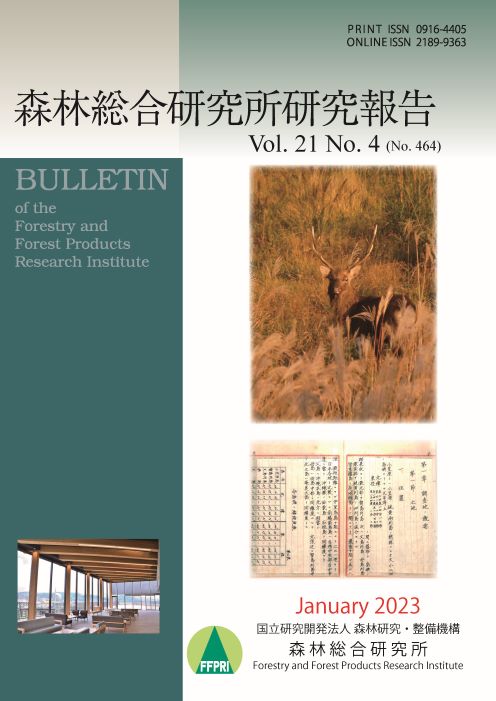Volume 21, Issue 4
Displaying 1-7 of 7 articles from this issue
- |<
- <
- 1
- >
- >|
-
Article type: Original article
2023 Volume 21 Issue 4 Pages 247-259
Published: January 16, 2023
Released on J-STAGE: January 17, 2023
Download PDF (1268K) -
Article type: Short Communication
2023 Volume 21 Issue 4 Pages 261-265
Published: January 16, 2023
Released on J-STAGE: January 17, 2023
Download PDF (2256K) -
Article type: Short Communication
2023 Volume 21 Issue 4 Pages 267-274
Published: January 16, 2023
Released on J-STAGE: January 17, 2023
Download PDF (5483K) -
Article type: Research record
2023 Volume 21 Issue 4 Pages 275-303
Published: January 16, 2023
Released on J-STAGE: January 17, 2023
Download PDF (13914K) -
Article type: Research record
2023 Volume 21 Issue 4 Pages 305-335
Published: January 16, 2023
Released on J-STAGE: January 17, 2023
Download PDF (2125K) -
Article type: Research record
2023 Volume 21 Issue 4 Pages 337-350
Published: January 16, 2023
Released on J-STAGE: January 17, 2023
Download PDF (6668K) -
Article type: Research record
2023 Volume 21 Issue 4 Pages 351-356
Published: January 16, 2023
Released on J-STAGE: January 17, 2023
Download PDF (1906K)
- |<
- <
- 1
- >
- >|
